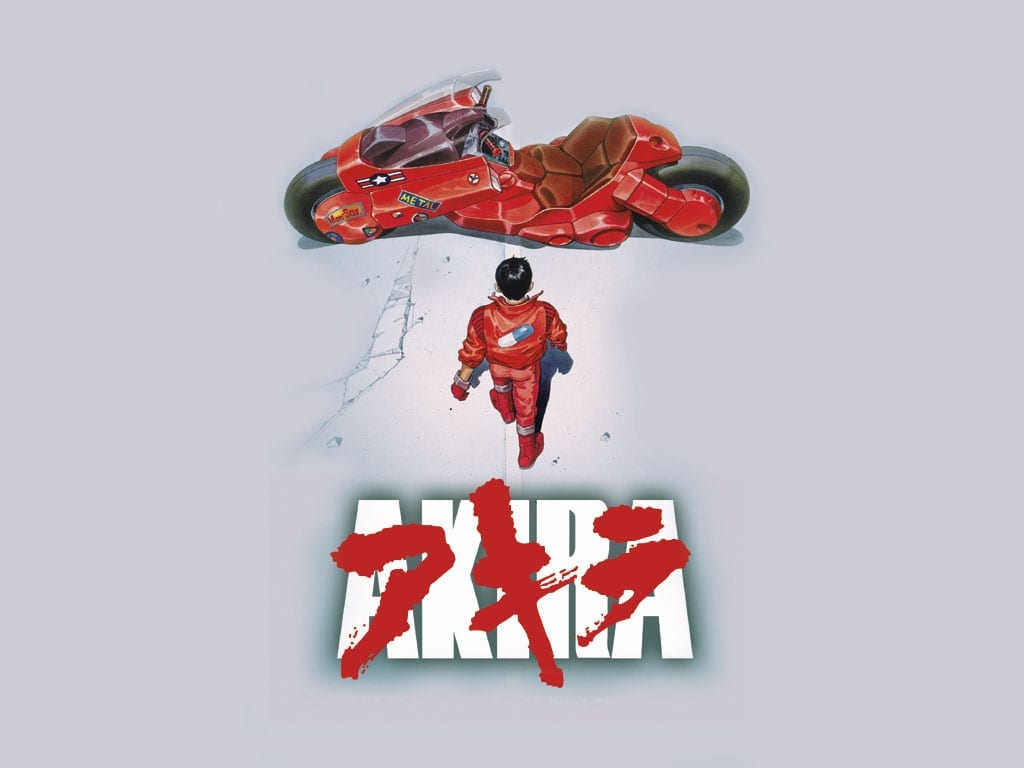Released in 1988, the manga adaptation from creator Katsuhiro Otomo’s Akira has remained one of the many spearheads in anime, reaching critical acclaim and gained a cult following, many of which, who are critics and fans, consider Akira to be Otomo’s magnum opus. Still ravishing in its aesthetic importance, influence and impact in modern anime, there are multiple motifs and themes within Akira that make the film outshine its peers- its prescience to modern society making it still relevant and heavily praised.
https://www.youtube.com/watch?v=e05lkiHVaZQ
RED
The colour ‘Red’ is prominent throughout this film throughout, connoting themes of imminent danger. From Kaneda’s iconic jacket and motorcycle to the insidious-like light Neo-Tokyo imbues across the city and the cape that Tetsuo wears during his relentless destruction of Neo-Tokyo. The use of red is portentous and enforces tension onto the audience watching. Otomo’s use of storytelling is reinforced by the specific use of colour in certain scenes of the film. As the film progresses, we witness tonnes of bloodshed as the Neo-Tokyo government fail to subdue Tetsuo.
LIGHT
When Kaneda encounters Tetsuo in the decrepit Olympic Stadium to only be saved by a laser satellite. The laser satellite is symbolic- representing salvation and hope. However, an alternative interpretation of this scene could be viewed as Mankind’s infatuation of playing God, as Shikishima attempts to use it in a failed attempt to kill Tetsuo with the satellite laser. In retrospect, when Tetsuo destroyed the satellite laser and uses the remnants to build himself an arm, this foreshadowed the exchange of powers, the decay of hope and eventually the end of the ongoing chase to capture Tetsuo.
TECHNOLOGY v. MAN
Despite the cyberpunk setting where technology has leapt over boundaries, from creating espers to preserving parts of Akira (who created WWIII.) Mankind is shown to be regressive and the dichotomy between the two is shown throughout- especially by Doctor Onishi- who becomes fuelled by ego and discovery, continues to operate on Tetsuo, fully aware of the consequences doing so.
YOUTH
It can be argued that Otomo portrayed Tetsuo to be used as a vehicle to show the machinations of the adult-dominated world, who exploit the innocence of Tetsuo to satisfy their own desires. The adult characters who have political authority i.e. Colonel Shikishima are represented as heartless, corrupted and pugnacious- who resort to violence or manipulation in order to get their way. As well as the exploitation of Tetsuo because of greed and a ‘survival of the fittest’ mentality. Atavistic theories such as Social Darwinism comes at the expense of the death of Kaori as well, a meek schoolgirl who is abused and assimilated throughout the film. The dystopian themes are executed perfectly by Otomo, the male characters represent dominance and recklessness whilst the female characters (Rei, Kiyoko and Kaori) represent resistance, solace and change and as the chase for Tetsuo continues- a sense of malaise is materialized as Tetsuo continues to grow stronger whilst the hope of change and resolution shrinks.
Words by Ethan Herlock
